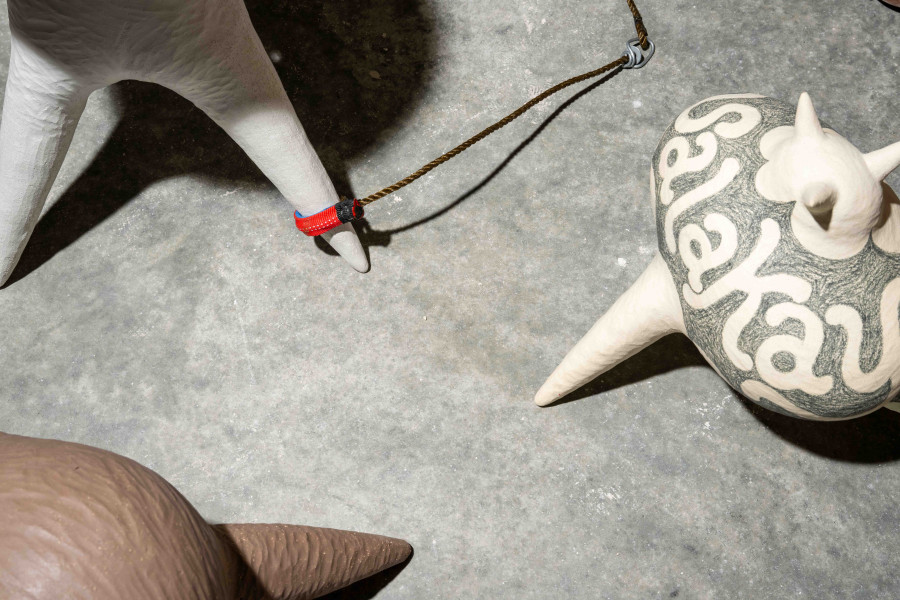Mark Valenzuela: Bantay-Salakay

In Bantay-Salakay, Valenzuela explores the offensive and defensive strategies embedded in our environments, and the role of power in determining whether these strategies represent resistance or oppression.
2 August to 20 September 2025
Audiences will enter a hostile environment of spikes, weeds, walls, shards, and noise, in an installation that combines ceramics, steel, timber, textiles, sound, and more. This exhibition can be seen and experienced from multiple angles, through an installation layered with colliding ideas. Spiky ceramics, for example, in some cases reference the encroaching spread of introduced weeds, and in turn colonising and oppressive forces; while elsewhere in the installation they are a nod to anarchic resistance to dominating forces.
Valenzuela considers the offensive and defensive characteristics of a place through the prism of his experiences in his home country of the Philippines and adopted country of Australia. The Philippines, Valenzuela believes, has a certain level of protectiveness, if not defensiveness, which stems from its history of colonisation. Defensiveness also typically appears in relation to the economic hierarchy, in the ways those with money and resources seek to protect and defend themselves from the majority poor. At an interpersonal level, however, Filipino culture is not characterised by defensiveness, but quite the opposite. The Tagalog term pakikipagkapwa translates to a kind of shared unity with another person, a term that means there is no space between oneself and another.
Comparatively, Valenzuela considers the lack of pakikipagkapwa he has experienced in dominant Australian culture. Through his work, he seeks to explore the reasons for this absence of pakikipagkapwa – population size, the individualistic nature of the dominant Western culture, the tenuous hold that most Australians have on this land that was never ceded by First Nations people - which manifests as a ubiquitous and pervasive defensiveness.
Feature Image: Mark Valenzuela's studio (2025). Photography by Morgan Sette.
Artist
Curator
Videography: Sam Roberts
Projections: Mark Valenzuela x Miles Dunne
Sound: Mark Valenzuela x Alycia Bennett
Bantay-Salakay Exhibition Kit
Support
Mark Valenzuela is the 2025 recipient of the Porter Street Commission – ACE’s annual award supporting new artwork commissions by South Australian artists.
ACE is supported by the Australian Government through Creative Australia, its principal arts investment and advisory body and by the Government of South Australia through Create SA.
The performance program is supported by City of Adelaide.
Presented as part of the South Australian Living Artists (SALA) Festival.








